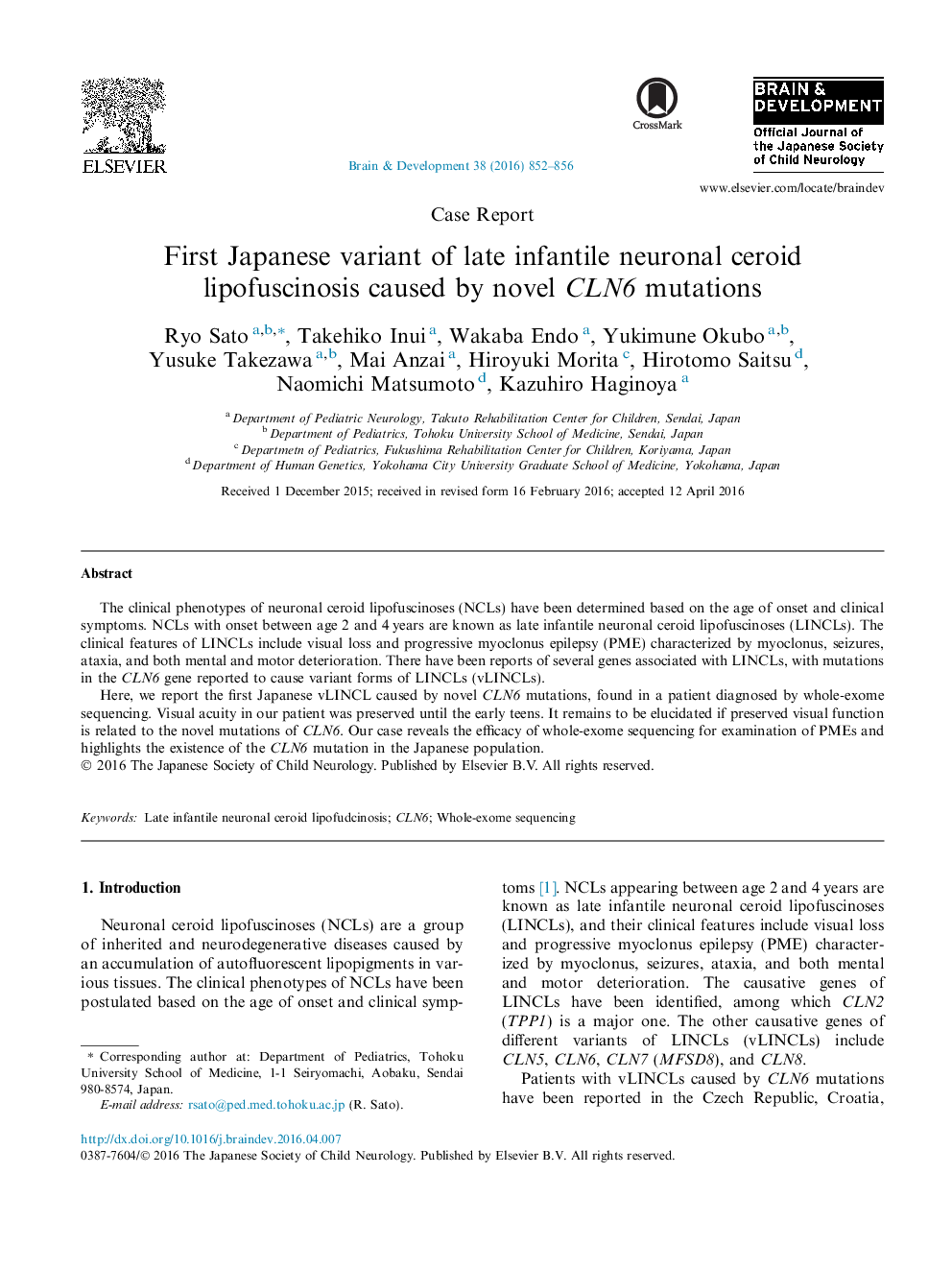| Article ID | Journal | Published Year | Pages | File Type |
|---|---|---|---|---|
| 3036430 | Brain and Development | 2016 | 5 Pages |
The clinical phenotypes of neuronal ceroid lipofuscinoses (NCLs) have been determined based on the age of onset and clinical symptoms. NCLs with onset between age 2 and 4 years are known as late infantile neuronal ceroid lipofuscinoses (LINCLs). The clinical features of LINCLs include visual loss and progressive myoclonus epilepsy (PME) characterized by myoclonus, seizures, ataxia, and both mental and motor deterioration. There have been reports of several genes associated with LINCLs, with mutations in the CLN6 gene reported to cause variant forms of LINCLs (vLINCLs).Here, we report the first Japanese vLINCL caused by novel CLN6 mutations, found in a patient diagnosed by whole-exome sequencing. Visual acuity in our patient was preserved until the early teens. It remains to be elucidated if preserved visual function is related to the novel mutations of CLN6. Our case reveals the efficacy of whole-exome sequencing for examination of PMEs and highlights the existence of the CLN6 mutation in the Japanese population.
